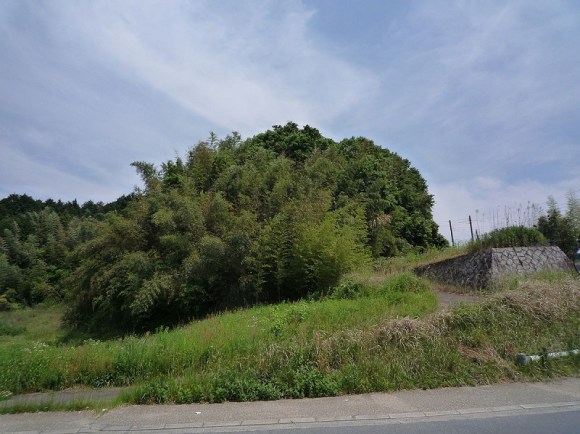
Japan’s kofun are ancient burial mounds that can be found throughout the country in a wide range of sizes and shapes. They’re great sources for learning about the past, covering multiple centuries of Japanese history. Collectively, they offer remarkable glimpses into the life of Japan from the third to the seventh centuries CE.
Kitora Kofun is one of Japan’s smaller kofun, but since its discovery in 1983, it’s proven to be incredibly valuable for historians. With an exhibit focusing on the tomb coming up later this year, some extra work has gone into analyzing the star chart used to decorate one of the walls — and researchers have come to some surprising conclusions about its origin!
Update: As one knowledgeable reader has pointed out, the Nebra Sky Disk is actually much older — dated to around 1,600 BCE. However, it’s not entirely clear if the Nebra Sky Disk is a “star chart” or only a “representation of the cosmos.” We’re looking into this and will provide more information when we have it!
Updated update: We’ve contacted some experts and learned a little more about the Sky Disk. Its and authenticity have been verified by UNESCO, but it is apparently an “astronomical rule” and not a sky chart. As such, it would be accurate to say that the Kitora Kofun sky chart is the oldest in the world — but it’s hardly the oldest representation of the cosmos. Nonetheless, both are fascinating artifacts of our shared global history! We’d also like to thank Dr. Alfred Reichenberger for helping us out!
The original article continues below.
▼ The star chart in question
Kitora Kofun was likely built in the seventh or eighth century, though it remains unclear who was actually buried in the tomb. Some speculate that it may have been a son of Emperor Tenmu, but while we may never know for sure, the tomb actually presents a fascinating bit of history on the connection between Japan and China at the time.
Of course, envoys and interaction between Japan and China have been widely documented by Chinese sources, stretching back to before Japan even had a written history. And as it turns out, Kitora Kofun’s star chart may actually be a relic of that interaction.
▼ And a pretty relic at that!
In advance of an exhibit featuring Kitora Kofun’s star chart at Nara Prefecture’s Asuka Historical Museum this October, two different researchers sat down and took a close look at the celestial map. Though Kitora Kofun was constructed much later, it seems likely that the chart was made sometime around 400 CE or 80 BCE. Obviously, there’s a big difference between those two dates, but either way, the map was likely made many centuries before the kofun was built.
But even more surprising is the suggestion that it wasn’t even made in Japan!
According to one of the researchers, based on the position of the stars, it’s likely the map originated somewhere around the 34th parallel north latitude. Based on the technology of the time, he also surmised that it was probably created in a major city in China. Regardless of when or where it originated, this is likely the oldest extant star chart in the world. The tomb itself has received a special designation by the Japanese government, like many other kofun.
Despite being well over a thousand years old, the star chart has held up against the ravages of time. We’d definitely encourage everyone to check it out later this year if you have the chance!
▼ A quick video tour of Asuka Historical Musuem
If you are making plans for this autumn, the exhibit will run from October 9 to November 29. Admission will be 270 yen (US$2.15).
Museum information
Asuka Historical Musuem
Address: 601 Okuyama Asukamura Takaichigun Nara-ken 634-0102
〒634-0102 奈良県高市郡明日香村奥山601
Phone number: 0744-54-3561
Website
Sources: Japaaan, Asuka Rekishi Koen, Agency for Cultural Affairs, Daily Matome, Tokyo Shinbun, Wikipedia Japan (Kitora Kofun)
Images: Wikipedia/New Japan